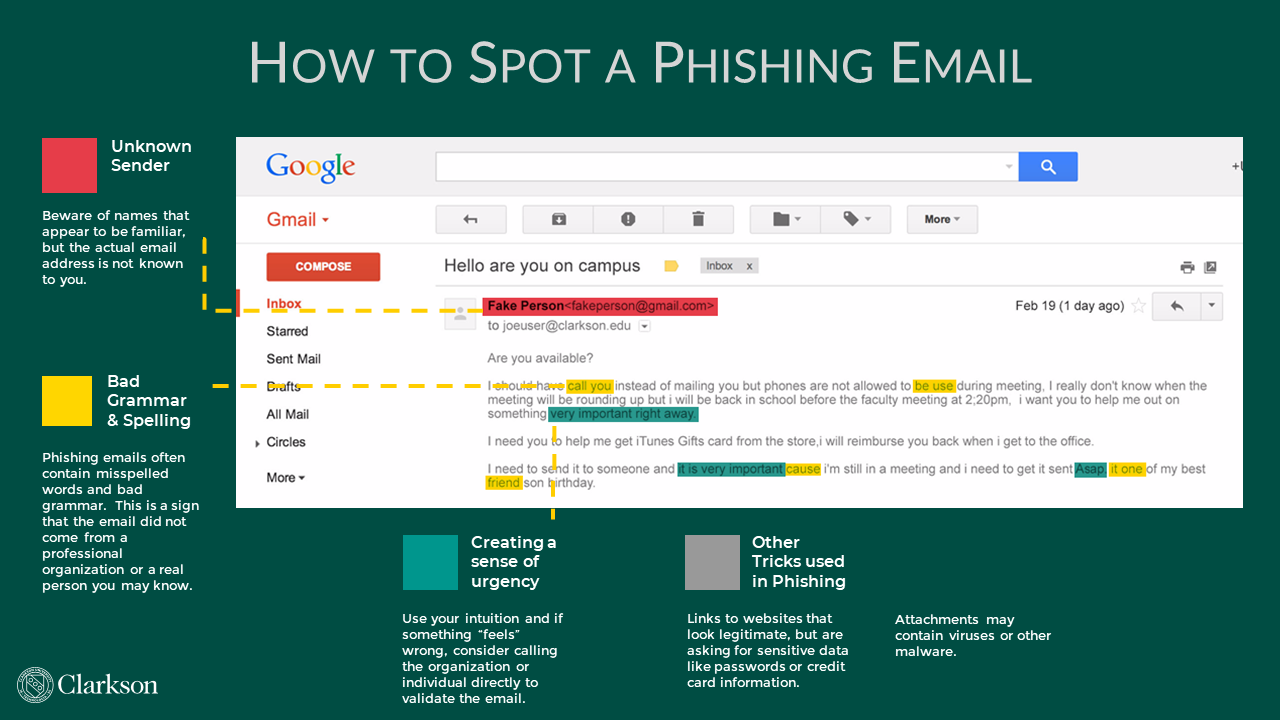Phishing Email
How to Spot a Phishing Email
Download as PDF
Do not provide any personal or Clarkson information via email.
Although it may seem private, email can easily be intercepted, copied or otherwise re-routed. If you are thinking of sending potentially sensitive information, consider the impact if it were to be published in the New York Times. Send information you'd rather not have public via another means.
Do not open email with attachments if you do not know the sender or are not expecting the email.
Email attachments are often used as a way to get a virus or other program onto your computer. Additionally, email can easily be forged to appear to be coming from someone you know. So, be safe not sorry! If you receive an attachment from someone you do not know, don't open it. If you know the sender, verify with them that they sent it before opening.
Do not click any link in email from an unknown sender.
Links in email can easily point to a location other than what they indicate. Don't click on them. A simple web link can be used to easily verify that your email address is active (and therefore attractive for spammers). At worst, even clicking on a link that doesn't seem to work can download and install software onto your computer without your consent.
Description from How to Spot A Phishing Email image above.
- Unknown Sender.
- Beware of names that appear to be familiar, but the actual email address is not known to you.
- Bad Grammar & Spelling.
- Phishing emails often contain misspelled words and bad grammar. This is a sign that the email did not come from a professional organization or a real person you may know.
- Creating A Sense Of Urgency.
- Use your intuition and if something “feels” wrong, consider calling the organization or individual directly to validate the email.
- Other Tricks Used In Phishing
- Links to websites that look legitimate, but are asking for sensitive data like passwords or credit card information.
- Attachments may contain viruses or other malware.

